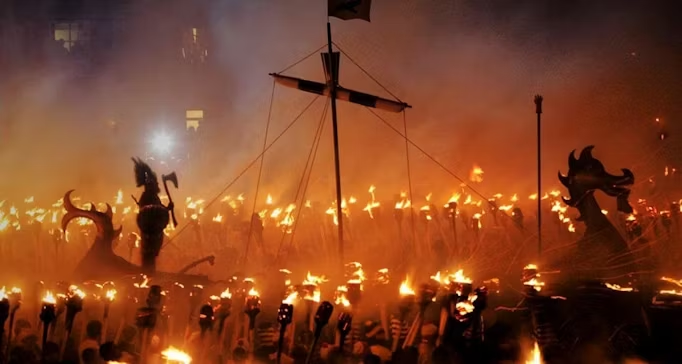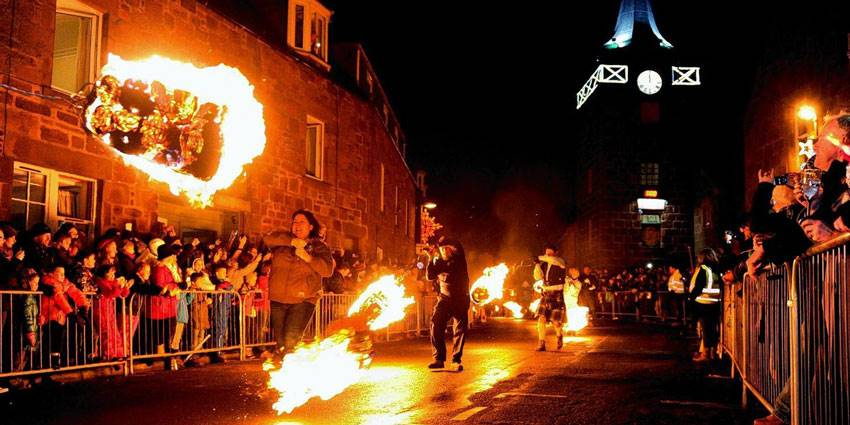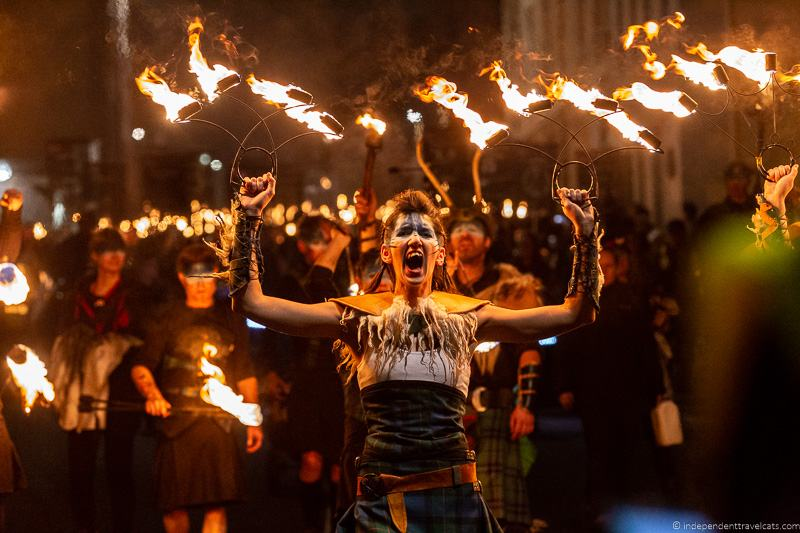Scotland’s New Year Party Like No Other
Hogmanay. It’s one of those words that feels like a party just waiting to happen. If you’ve never heard of it, think of it as Scotland’s very own unique New Year’s Eve extravaganza. Complete with fireworks, singing, and more whisky than you can shake a sporran at. But where did it all come from, and why do the Scots go all out? Let’s dive into the history of Hogmanay, with a dram in hand.
A Little History with Your Dram
The origins of Hogmanay are, much like a Scotsman after a ceilidh, a wee bit hazy. Some say it started with the Vikings, those rowdy party crashers who loved a good old winter bash. Their midwinter festival, Yule, was a big, boozy affair full of feasting and celebrating the fact they’d made it through another freezing season without becoming popsicles If you’ve ever been to a Scottish Hogmanay, you’ll know we’ve kept the “big” and “boozy” bits alive and well.
But that’s not all, Let’s talk about the French (I guess sometimes we have too). During the Auld Alliance (a medieval Scotland-France bromance), they supposedly brought over their New Year tradition, “hoguinané.” fine wine, gift-giving, and lots of dramatic shouting in French. How Scotland turned that into whisky-fueled fire festivals is anyone’s guess, but we’re nothing if not inventive.
Add to this The Reformation. Oh, yeah Scotland, in its infinite wisdom, decided Christmas was suspiciously Catholic and banned it for centuries. No trees, no presents, no dodgy jumpers from your Grunny. Just December 25th as another regular day of work. Naturally, all that repressed festivity needed somewhere to go, and Hogmanay became the party of the year. If we couldn’t celebrate in December, you’d better believe we were ready to go all out by December 31st.
So there you have it, Hogmanay is part Viking knees-up, part French gift-giving, and a big helping of “Christmas is cancelled, so let’s do this instead.” Add a splash of whisky, a few fireworks, and lots of singing and dancing and you’ve got yourself a Scottish New Year’s Eve to remember (or forget, depending on how much whisky was involved). Slàinte to that!
What Makes Hogmanay So…Scottish?
If you think it’s just about singing “Auld Lang Syne” and having a few too many, think again. Hogmanay has its own set of traditions, and some of them are as unique as Scotland itself.
Take first-footing, for example. for example. It’s the idea that the first person to cross your doorstep after midnight sets the tone for the whole year ahead. Ideally, this should be a tall, dark-haired man. Why dark-haired? Because back in the day, a blonde stranger might have been a Viking, and if you think about it, that didn’t always end well. First-footers usually bring gifts like coal, whisky, or shortbread.
No Hogmanay is complete without a rowdy chorus of Auld Lang Syne, the world’s most famous New Year’s song, written by none other than Robert Burns. At Hogmanay, it’s sung in a circle while holding hands, a tradition that inevitably falls apart once the whisky kicks in and nobody remembers the words. But hey, it’s the thought that counts, right?
Oh, and no one can forget the fire. Scotland loves a good fire festival, and Hogmanay is of course no exception. In Stonehaven, they literally swing giant flaming balls around their heads to ward off evil spirits and ring in the New Year. It’s equal parts thrilling and terrifying, and honestly, take it from me, if you can, you should go see it at least once.



Why Hogmanay Still Rocks
Hogmanay isn’t just about partying (although that’s a big part). It’s about community, tradition, and the Scottish knack for celebrating life, no matter what. It’s a chance to gather your loved ones, say goodbye to whatever nonsense the old year threw at you, and toast to a brighter tomorrow, preferably with a whisky in hand and a song in your heart.
So, whether you’re braving the crowds in Edinburgh for the street party, throwing a cozy get-together at home, or just trying to remember the words to ring in the bells. Hogmanay is a reminder that no matter how tough the year’s been, there’s always room for hope and a good party.
A Hogmanay Poem in Doric
Aye, the year's near deen, the time is nigh,
Tae mak oor toasts an' kiss the sky.
The bells will chime, the nicht grows clear,
Fit's comin' neist? A brand-new year!
Wi’ first-foot steps, we’ll cross the flair,
A lump o’ coal, a dram tae share.
A dark-haired loon, guid luck tae bring,
An’ “Auld Lang Syne” we’ll loudly sing.
The fire’s ablaze, the whisky pours,
Lang shadows cast on auld, cauld doors.
Oor dreams o’ yest’re ar nae forgot,
But here’s tae hope—an’ plenty o’ jot!
So raise yer glass, an’ hae nae fear,
Guid health an’ cheer for a’ the year.
Frae mountain high tae river deep,
Lang may yer lum reek—an’ dreams ye keep!
Slàinte tae you, an’ awbody here,
Happy Hogmanay, an’ a blithe New Year!
By Eskarina
